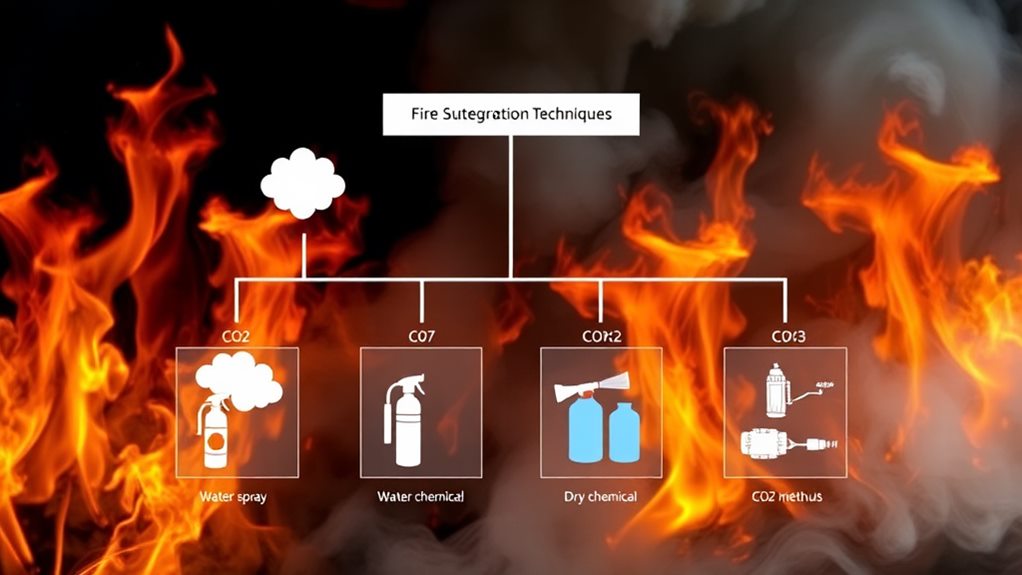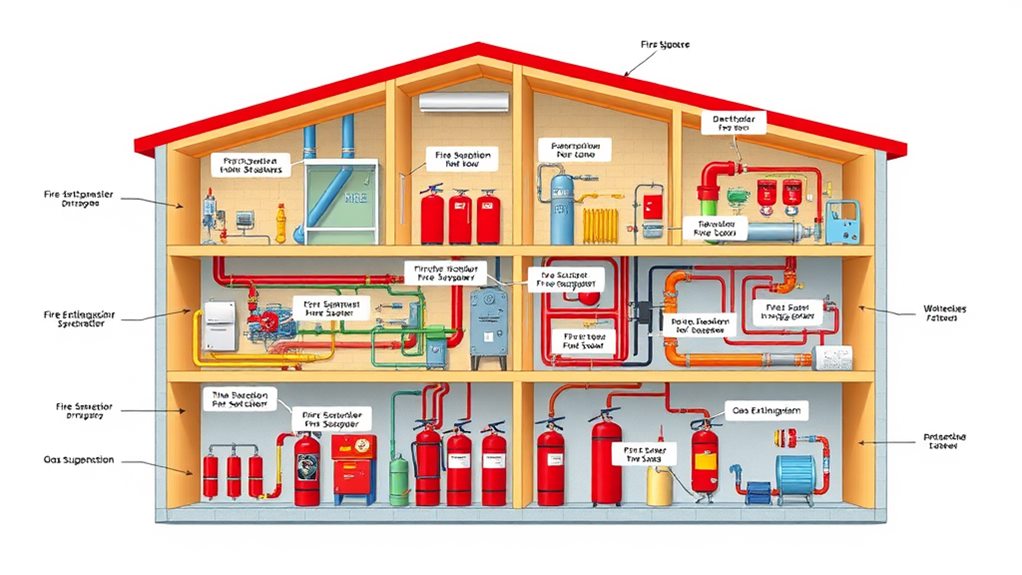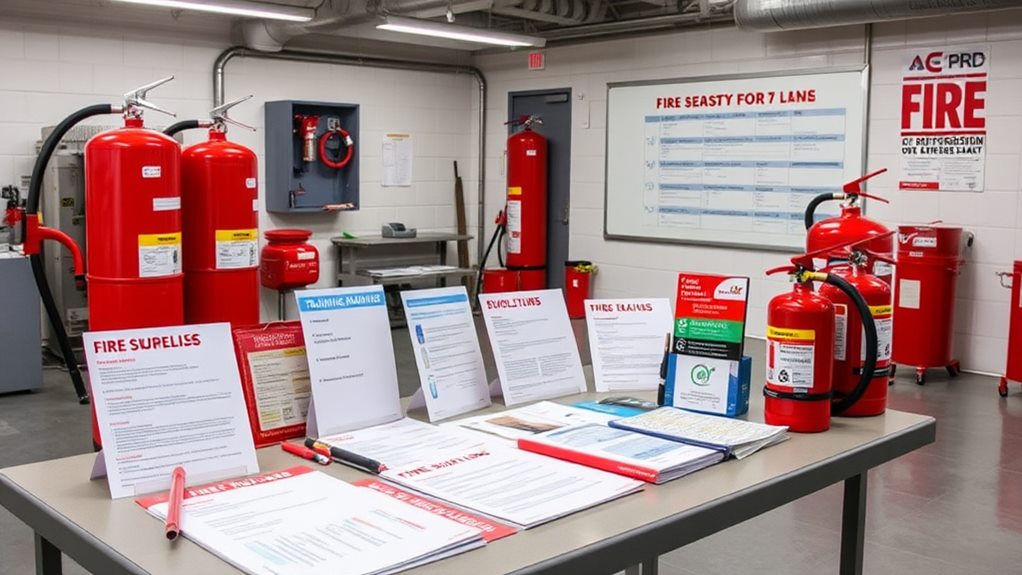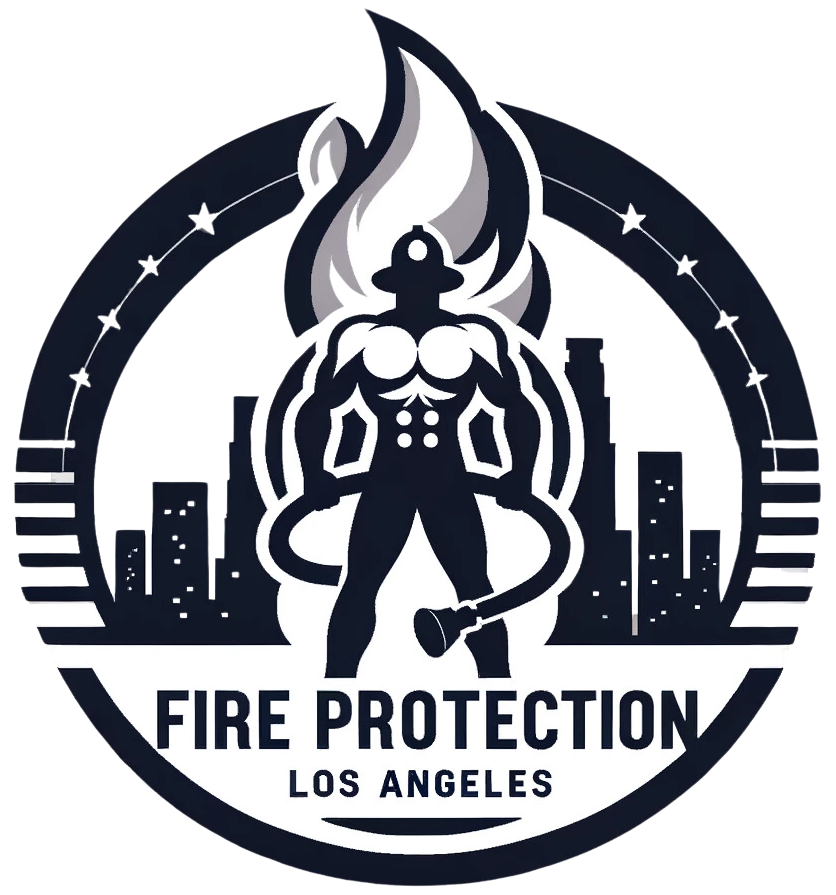In our thorough guide to fire suppression training techniques, we focus on essential methods to protect lives and property. We cover various fire suppression systems, such as water-based, gaseous, foam-based, and hybrid systems, which cater to specific fire risks. Training enhances emergency preparedness, helps identify fire hazards, and promotes effective response strategies. Best practices, like hands-on practice and regular drills, build confidence and readiness. We also explore the role of technology in training, providing access to valuable resources. By understanding these techniques, we can guarantee safety during emergencies, and you'll find even more helpful insights ahead.
Understanding Fire Suppression Techniques

When it comes to fire suppression techniques, understanding the right methods for different fire scenarios is essential for effective response.
We recognize that fire suppression systems vary considerably based on the type of fire. For instance, water-based fire suppression systems, such as wet pipe sprinklers and deluge systems, are the most commonly used methods. They work by cooling and soaking combustible materials to extinguish flames.
Additionally, selecting the appropriate fire suppression agents is key to maximizing effectiveness and minimizing environmental impact.
On the other hand, gaseous fire suppression systems, which often use agents like CO2 and FM-200, are ideal for areas sensitive to water damage. These systems reduce oxygen levels, effectively suppressing combustion without harming valuable assets.
Foam-based suppression techniques are particularly beneficial for flammable liquid fires. They create a barrier that smothers flames and helps prevent re-ignition.
Lastly, hybrid fire suppression systems combine different agents and technologies. This allows for customizable solutions tailored to specific fire risks.
Importance of Fire Suppression Training
Understanding the importance of fire suppression training is essential for all of us.
It not only helps protect lives and property but also prepares us to respond effectively in emergencies.
By enhancing our skills through structured programs like the FSSA Training Program, we can work together to create a safer environment for everyone.
Enhancing Emergency Preparedness
Fire suppression training is crucial for enhancing our emergency preparedness in the workplace. By equipping our employees with the skills to respond effectively to fire incidents, we can potentially reduce the number of workplace injuries, which total around 5,000 annually.
Extensive training not only prepares individuals for emergencies but also focuses on identifying fire hazards that can lead to incidents. Here's why extensive training programs matter:
- Knowledge of fire hazards: Understanding common fire risks helps us prevent incidents.
- Emergency plans: Familiarity with emergency procedures guarantees everyone knows what to do.
- Employee training: Engaging employees in regular fire drills builds confidence and preparedness.
- Fire safety management: Effective training reinforces our commitment to maintaining a safe environment.
- Continuous updates: Keeping our training materials current with the latest techniques fosters a proactive approach.
Regular fire drills and training sessions are important for reinforcing knowledge and familiarity with emergency procedures. This leads to a more effective response during actual fire emergencies and enhances our overall workplace safety culture.
Training on different fire suppression systems, such as water-based and gaseous systems, is crucial, especially in areas where specific agents may be more effective.
Together, let's prioritize fire suppression training to promote a safer workplace for everyone.
Protecting Lives and Property
While we may not always think about the risks, the significance of fire suppression training in protecting lives and property can't be overstated. Every day, over 200 workplace fire incidents occur, leading to injuries and considerable property damage. This reality highlights the critical need for thorough fire suppression training.
By equipping ourselves with the skills to respond effectively, we can make a direct impact on life-saving outcomes. Additionally, understanding the various expert fire safety solutions available can further enhance our preparedness during emergencies.
In 2022, workplace fires caused over $4 billion in property damage, making it clear that effective suppression techniques are crucial. Fire suppression training not only enhances our personal safety but also fosters a culture of preparedness, allowing us to act confidently during emergencies.
When we practice using safety equipment and develop our emergency responses, we greatly reduce response times and improve overall safety outcomes.
Moreover, fire prevention is an integral part of our training. By understanding fire risks and practicing suppression techniques, we can prevent incidents before they escalate.
Ultimately, through regular fire suppression training, we can protect lives and safeguard our property, creating a safer environment for everyone. Let's commit to this essential training and make certain we're ready when it matters most.
Types of Fire Suppression Systems

Numerous types of fire suppression systems are available, each designed to address specific fire risks and environments. Understanding these systems helps us guarantee safety in various settings.
Here's a quick overview:
- Water-based fire suppression systems: These are the most common, using methods like deluge systems and wet pipe sprinklers to extinguish fires with water.
- Gaseous fire suppression systems: Ideal for sensitive areas, such as data centers, these systems use agents like CO2 to suppress fires without damaging equipment.
- Foam-based fire suppression systems: Effective for flammable liquid fires, they create a protective barrier over spills using low or high-expansion foam.
- Hybrid fire suppression systems: Combining multiple agents, these systems offer customizable solutions to enhance fire detection and control based on specific risks.
- Regular inspections: Maintaining fire suppression systems is critical for compliance with NFPA standards, guaranteeing they remain effective in emergencies.
Best Practices for Effective Training
Effective training in fire suppression is vital for guaranteeing safety in our workplaces. To achieve this, we should customize our fire safety training programs to address specific hazards unique to our environment. Incorporating hands-on practice with fire suppression equipment, like hoses and extinguishers, greatly boosts our skills and confidence in emergency situations.
We also need to conduct regular fire drills at least twice a year. These drills reinforce our knowledge of evacuation procedures and confirm we respond appropriately during fire incidents. After each training session, gathering feedback from participants is significant. This feedback helps us identify knowledge gaps and improve future training, fostering a proactive safety culture.
Utilizing Learning Management Systems can further enhance our training. These systems provide 24/7 access to training materials, allowing us to learn at our own pace and revisit vital information as needed.
Role of Technology in Training

As we explore the role of technology in fire suppression training, we see that digital learning platforms make it easier for us to access important materials anytime.
Interactive simulations offer realistic scenarios that help us practice our skills and remember the techniques better.
Additionally, real-time monitoring tools allow us to track our progress and guarantee we're meeting safety standards effectively.
Digital Learning Platforms
Digital learning platforms have revolutionized the way we approach fire suppression training. These platforms allow us to access training materials anytime, ensuring we can learn at our own pace. This flexibility helps improve knowledge retention, as we can revisit content whenever we need.
Here are some key benefits of using digital learning platforms in fire suppression training:
- 24/7 Access: We can learn whenever it suits our schedules.
- Interactive Simulations: These tools let's practice decision-making in realistic scenarios safely.
- Learning Management Systems (LMS): They automate tracking our progress and certifications.
- Multimedia Elements: Videos and quizzes enhance our understanding of fire suppression techniques.
- Continuous Improvement: Feedback collected through these platforms helps improve training content and delivery.
Interactive Simulations
Interactive simulations have transformed fire suppression training by immersing us in realistic scenarios that sharpen our decision-making skills under pressure. These interactive simulations allow us to practice responses to fire hazards in a safe environment, enhancing our ability to react effectively when it matters most.
By utilizing virtual reality technology, we engage with lifelike fire scenarios that not only captivate our attention but also improve our retention of critical fire suppression techniques.
What's more, these simulations can be tailored to reflect specific workplace hazards, ensuring our training is relevant and applicable to the unique risks we may encounter on the job. A study even showed that employees who participated in interactive simulations demonstrated a 30% improvement in identifying and responding to fire hazards compared to traditional training methods.
Furthermore, continuous access to simulation-based training materials allows us to revisit scenarios and reinforce our understanding of fire suppression tactics at our own pace. This flexibility helps us build confidence and competence, making sure we're well-prepared to handle emergencies effectively.
Real-Time Monitoring Tools
Building on the advancements we've seen with interactive simulations, real-time monitoring tools take fire suppression training to the next level.
These tools offer instant feedback on trainees' performance, allowing for immediate corrections and improved learning outcomes. They play a significant role in enhancing emergency preparedness and guaranteeing that safety training for employees is both effective and engaging.
Here are some key benefits of using real-time monitoring tools in our training:
- Provides instant feedback for quick corrections
- Enables 24/7 access to training materials
- Replicates various fire scenarios for practice
- Analyzes data to identify common errors
- Guarantees safety and compliance during live exercises
Emergency Response Planning
Effective emergency response planning is crucial for any organization to guarantee safety during fire incidents. We need to establish clear protocols for incident reporting, alert methods, and emergency shutdown procedures. This guarantees a coordinated response when a fire occurs.
A well-defined chain of command, with specific roles and responsibilities, helps our safety officers and team leaders manage fire situations effectively.
To keep our emergency response plans relevant, we should regularly update them to reflect changes in fire suppression systems or facility layouts. This improves awareness among occupants and keeps evacuation routes effective and accessible.
Continuous training programs and regular fire drills are essential for reinforcing emergency response procedures, enabling everyone to act decisively and confidently during fire incidents. This practice greatly boosts our overall safety and preparedness.
Compliance and Regulatory Considerations

Guaranteeing safety during fire incidents goes hand-in-hand with understanding compliance and regulatory considerations.
We must recognize that following the rules set by organizations like the Occupational Safety and Health Administration (OSHA) and the National Fire Protection Association (NFPA) is vital to maintaining a safe workplace.
These regulations guide us in providing effective fire safety training and preparing for emergencies.
Here are some key compliance and regulatory considerations we should keep in mind:
- OSHA mandates fire safety training focused on fire hazards and emergency evacuation procedures.
- NFPA codes, such as NFPA 101, outline necessary standards for fire safety training.
- Regular compliance checks and drills help us adhere to local fire codes.
- Documenting training programs guarantees accountability and transparency.
- Companies in high-risk industries face stricter regulatory requirements.
Final Thoughts
In closing, we've explored the essentials of fire suppression training and its crucial role in ensuring safety. By understanding the techniques and systems, we're better equipped to handle emergencies. Remember, preparation isn't just a precaution; it's a promise to protect ourselves and others. As we embrace technology and best practices, let's make sure we're always ready to face the unexpected. After all, being prepared is our best defense against the heat of the moment.








